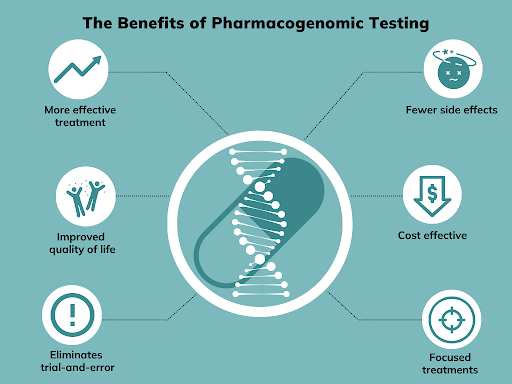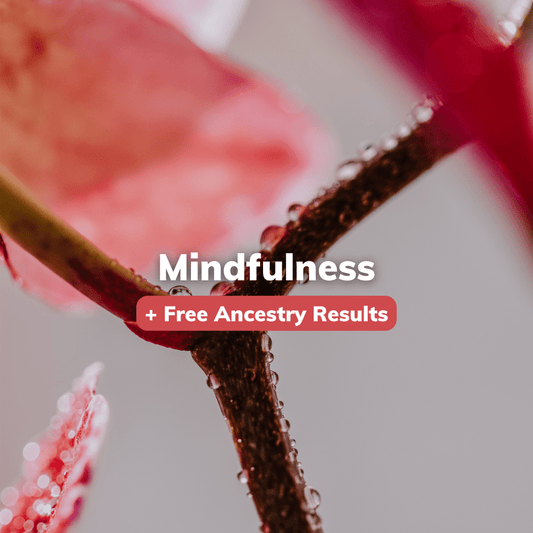
Pharmacogenetics Report: A Guide for Practitioners
BioCertica Content TeamRecently we have released our brand new product - pharmacogenetics report. In the previous article, we briefly introduced pharmacogenetics as a young yet very popular scientifica branch combining pharmacology and genomics. Pharmacogenetics explains how people respond differently to certain medications based on their unique genetic makeup.
To recall briefly, what we do in the pharmacogenetics report is to analyze individual genetic variants and their interactions with medications (i.e., gene-drug interactions) and their cumulative effect on specific phenotypes/diseases.
We have a different way of representing pharmacogenetics results to users/customers and practitioners. The main difference is that our users visualize results via mobile app, and practitioners use the practitioners portal to access the results they should explain to their clients/customers. If you want to learn more about accessing and using the portal, you can visit our library.
In this article, we'd like to provide a guideline for navigating the pharmacogenetics report on the practitioners portal. Below we provide step-by-step instructions on navigating reports with all variables and terms explained. Please redirect here if you want to learn more about navigating through a pharmacogenetics report from a user perspective using a mobile app.
1. Personal and introductory information

Once you accept the session, you can start exploring the pharmacogenetics report. Here we provide an example or demo for a BioCertica dummy user.
On the top of the report, you will see introductory and personal information for your client, as well as any current therapy the user is taking. It is essential to consider this information when considering other gene-drug and drug-drug interactions and their effect on the user’s phenotype/disease, as it will probably affect the consultations and prescriptions you recommend to your client. Once you finish exploring and analyzing the report and results, you can go to “Write a journal note” and close the session.
2. Quick & Custom view in Pharmacogenetics report
Once you come to the main part of the report, you have the option to view the results in two ways:
- Quick view
- Custom view
2.1. What is Quick View and how to use it?

Quick view (Figure 2) provides all the results paginated and adjusted for a brief look into results. You can see the drug names, class, category, phenotype category, user genetic information, and annotation text. On the other hand, the custom view (Figure 3) enables you to filter results according to relevant variables.
2.2. What is Custom View and how to use it?

The advantage of custom view is that it lets you choose exactly what you want to visualize in your report. For example, if your client suffers from high blood pressure, you may only want to check drugs to help treat that condition. To enable custom view, you have to activate at least 3 out of 4 available filter options:
- Phenotype category
- Specialty population
- Level of evidence
- Disease
One must first filter for the previous three variables to filter for disease. After you finish filtering, you will have a similar results representation as you get on quick view. Below is a visual representation of the custom view with filters applied for hypertension (Figure 4).

3. Explanation of variables and terms within the report
Whether you look at the quick or custom view or you filter results according to what you find the most relevant and useful, there are several technical terms you have to be familiar with to get the most out of this report. We will briefly explain each of them, starting with the variables used in filtering.
1. Phenotype category
The phenotype category describes a drug's effect on the body, its nature in gene-drug interactions, or the category of gene-drug annotation according to its effect. Therefore, it can have one or more of the following effects:
- Toxicity - if the drug is toxic to the body and causes side effects or increases the risk for certain disorders or complications associated with a specific genetic variant.
- Efficacy - mainly refers to the increased or decreased effect of a drug in alleviating symptoms of a specific disease
- Dosage - claims whether to increase or decrease the dosage of a specific drug given the particular gene variants
- Metabolism/PK - Pharmacokinetics describes the fate of a drug administered to a body, or in other words, what the body does to the drug or how it circulates through the body's metabolism.
- Other - this category comprises gene-drug interactions not encompassed by any of the categories mentioned above.
2. Specialty population
This variable has two possible options: pediatric and non-pediatric. The pediatric tag refers to any gene-drug interaction or annotation with at least one variant associated with children or infants, or the literature supporting that evidence is “pediatric.” Otherwise, the gene-drug interaction is considered non-pediatric and applies to adults only.
3. Level of evidence

Figure 5: Different levels of evidence. You can learn more here.
Each gene-drug association described by annotation text (example given below) is supported and proven by a study and reported by curators at the PharmGKB website. All these gene-drug interactions have their level of evidence, which depicts the strength, reliability, and certainty behind the annotation text. The evidence level goes from 1A to 4, where 1A represents the highest level of evidence, and 4 represents unsupported findings (Figure 5).
4. Disease
This represents a specific disease that is affected by a particular gene-drug interaction.
5. Drug names
The first column in the results section includes drugs with their generic name. Moreover, we also provide trade names as they are in the United States(US name) or South Africa (SA name).
6. Drug class & category
Although sometimes used interchangeably, which leads to confusion, these two terms have different meanings. Drug category refers to a type of drug from a medical perspective and according to organic systems and conditions that the drugs are used to treat. Drug class represents the categorization from a pharmacological perspective, mechanism of action, and biological target.
We rely on the Anatomical Therapeutical Chemical (ATC) classification system. Drugs and their active substances are divided into groups based on the organs or systems they affect and their therapeutic, chemical, and pharmacological properties.
7. Genetic information
Finally, the client's genetic information is an equally important segment of the report. Here we include the following:
- Gene(s) name(s) that interact with a drug
- Genetic variants (SNPs) - variations specific to a particular person and located within the given gene
- Genotype - set of alleles of one gene that represent genetic information for a particular trait
8. Annotation text

Figure 6: Example of annotation text
Finally, there is annotation text for each gene-drug interaction describing how it affects the overall drug metabolism and the body’s response to how it handles the specific phenotype. The annotation text explains a drug and gene's relationship or interaction. Above, you can see an example of a genetic variant of the YEATS gene and its association with hypertension.
In future releases and upgrades, we plan to significantly improve and personalize these annotation texts and make them more readable and interactive.
*Disclaimer: The term “drug” in the above article refers to a chemical substance used to treat, cure, diagnose, or prevent a disease or condition. In this context, “drug” does not refer to any type of illegal stimulant or recreational drug. Alternatives for this term include medication, pharmaceutical, or therapeutic agents.
Written by: Nermin Đuzić, M.Sc. in Genetics, Content Specialist
Peer-reviewed by: Edin Hamzić, Ph.D. in Genetics, Chief Science Officer



